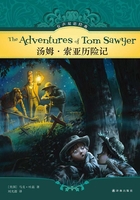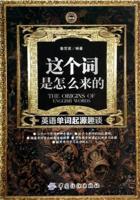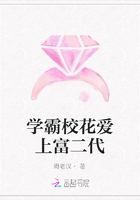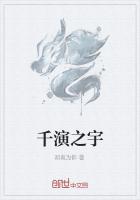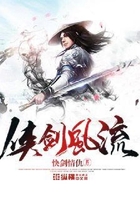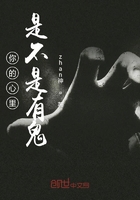The Dignity of “the Kingdom of Heaven”
The Sculptures of Emperors’ Tombs and Pottery Sculptures
In ancient China, the deaths of emperors or their relatives were important events. Emperors took many of their belongings into their graves, a custom similar to that of the ancient pharaohs in Egypt. One important difference, however, was that Chinese emperors did not hope to keep their bodies in shape to continue their life after death. They did not make corpses into mummies, but paid attention to the continuity of spiritual life.
The construction of large tombs for emperors and the pottery figures inside them can be traced back to the Shang and Zhou dynasties. The Qin terra-cotta warriors and horses discussed above reflect an important aspect of this burial culture. From the Han Dynasty onwards, tombs built aboveground became more important. The catacombs of emperors include many implements, pottery figures, and martial implements outside the coffin chambers showing the lordliness and prestige of emperors and nobles. The carvings on the tomb of Huo Qubing are similar to the carvings on the ground but their meaning is different from the stone carvings of the emperors’ tombs: The former is more narrative while the latter’s aim is to protect the tomb. Stone carvings were not used to protect the tomb until the Eastern Han Dynasty. Most of the carvings that have survived are those in front of the tombs of magistrates.
The sculpture in emperors’ tombs made bigger strides during the Northern and Southern Dynasty especially in the Southern. It developed important patterns and reached the height of its power and splendor in the Tang Dynasty.
Guard beast figures in the Wei, Jin, Northern and Southern Dynasties
Although the Qin and Han dynasties represent the first peak of construction of emperors’ tombs, most of them were underground. Above ground stone carvings did not appear until the Han Dynasty and became predominant during the Northern and Southern Dynasties.
The funeral system of the Wei, Jin, Northern and Southern dynasties was similar to that of the Han Dynasty but it had gradually formed the common practice of large-scale stone carvings to protect the tombs. The tombs included tombstones and huge stone beasts (tianlu, kylin and bixie).
Kylin and bixie were based on mythological animals but their body shapes are bigger and are more ferocious, representing the style of the period. The Southern Dynasties refer to a series of regimes in southern China from about the fifth to the sixth century and includes the Liu, Song, Southern Qi, Liang and dynasties. The Wei, Jin and Northern and Southern dynasties governed during a time of much chaos. Countries were created, others disappeared, some split up, some were broken. However, culture and art were full of vigor. During the Wei, Jin and Northern and Southern dynasties ideology, culture and art combined and developed.
The stone carvings in tombs of the Southern Dynasty were carved for the tombs of emperors and rajahs. The stone carvings at both sides of the tombs were called tomb stone carvings. These were only carved for emperors and rajahs. As a result, they were exquisitely carved with huge bodies to symbolize dignity. Some 33 stone carvings have been found in Jiangsu Province, 11 of which were in Nanjing. These pieces could have been carved as far back as the Liu Song period, more than 1,500 years ago.
Most tombs of Chinese emperors face south. The stone carvings include stone beasts protecting the tomb, columns and monuments. The stone beasts are known as tianlu, kylin and bixie. They are tall with their heads raised proudly, mouths open and piercing eyes. Both sides of their stomachs are engraved with two wings with four feet crossed. The head of tianlu has a pair of horns, kylin has one horn and bixie none. Tianlu, also known as heavenly deer, is a legendary divine beast and symbolizes the mandate of Heaven and a high position. Kylin is also auspicious. It first appeared early in the Warring States period, more than 2,500 years ago. These stone beasts protect the tombs and demonstrate the supreme authority of the owner. In tombs of the Southern Dynasty, tianlu and kylin were sculpted on the tombs of the emperors and bixie in the tombs of feudal lords, which were rigidly stratified.
In Jiangsu Province, there is a saying that Danyang is well known for kylin and Nanjing famous for bixie. The Xiao family, emperors of Qi and Liang, were buried in their hometown of Danyang. Their tombs were carved with tianlu and kylin. Most tombs of Qi and Liang feudal lords are in Nanjing and the trademark patterns of bixie are visible everywhere in the city. The city’s emblem uses bixie as major pattern.
Danyang’s tianlu and kylin stone beasts are excellent examples of work found in emperor tombs from the Southern Dynasty, of which the Xiu’an, Yong’an and Jing’an tombs are the most representative tombs. The kylin is well preserved, large and S-shaped, which is pretty and tall.
The bixie in Nanjing looks strong and remarkable. The stone carvings of the tombs of Xiao Hong, Xiao Rong, Xiao Jing and Xiao Ji are of the most vivid and representative. The bixie on the tomb of Xiao Hong is 3.2 meters long, 2.84 meters tall, and 3.35 meters at its waist. It weighs more than 15 tons. The bixie raises its head proudly with its long tongue out of its mouth and close to its chest, looking powerful and imposing.
The engraving technique is skillful and creates a new type of Chinese sculpture. The parts and the whole are very harmonious, showing a symmetric beauty. In addition to the tomb-guarding beasts, tomb columns and tombstone were other types of stone carvings during the Southern Dynasty. The stone columns of Emperor Xiaojing, Emperor Jianwen of Liang and the Xiaoji tomb column in Jurong are the most famous.

